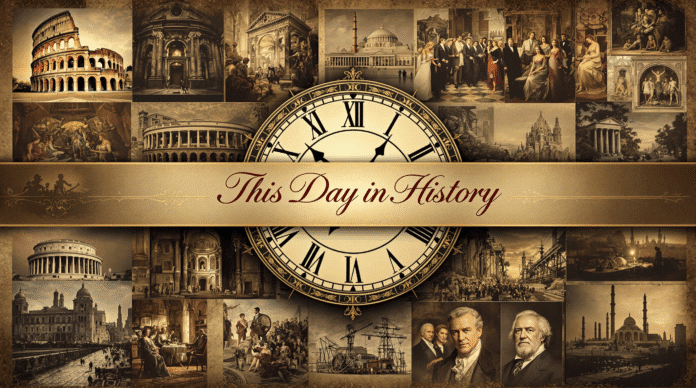Exploring groundbreaking achievements, conflicts, and cultural milestones.
1953 – Coronation of Queen Elizabeth II
On June 2, 1953, Queen Elizabeth II was crowned at Westminster Abbey in London. The ceremony was a grand affair, steeped in tradition and watched by millions around the world, marking the beginning of her long and impactful reign. It was the first major international event to be televised, bringing the pomp and circumstance of the British monarchy into homes across the globe.
Historical Context
Elizabeth ascended to the throne in 1952 upon the death of her father, King George VI. The coronation took place over a year later, following a period of mourning. The event was meticulously planned to uphold centuries-old traditions while also embracing modern technology through television broadcasting.
Significance
Queen Elizabeth II’s coronation symbolized continuity and stability in a rapidly changing world. Her reign would become one of the longest in British history, witnessing significant social, political, and technological transformations. The televised coronation marked a turning point in how the monarchy connected with the public, making it more accessible and relatable.
1964 – Establishment of the Palestine Liberation Organization (PLO)
The Palestine Liberation Organization (PLO) was established on June 2, 1964, in Cairo, Egypt. The organization was founded with the goal of unifying various Palestinian groups under one umbrella to pursue the liberation of Palestine. Ahmed Shukeiri was elected as its first chairman.
Historical Context
The creation of the PLO occurred in the aftermath of the 1948 Arab-Israeli War and the subsequent displacement of many Palestinians. Arab leaders sought to create a unified front to address the Palestinian issue, leading to the formation of the PLO with the backing of the Arab League.
Significance
The PLO became the primary representative of the Palestinian people on the international stage. Over the years, it evolved from a militant organization to one that engaged in political negotiations with Israel. The establishment of the PLO marked a crucial moment in the history of the Israeli-Palestinian conflict, shaping the dynamics of the region for decades to come.
1966 – Surveyor 1 Lands on the Moon
On June 2, 1966, Surveyor 1, an unmanned spacecraft launched by NASA, successfully landed on the Moon. This marked the first soft landing by an American spacecraft on the lunar surface. Surveyor 1 transmitted over 11,000 high-resolution images back to Earth, providing valuable data for future manned missions.
Historical Context
The Surveyor program was part of NASA’s efforts to prepare for the Apollo missions, which aimed to land humans on the Moon. Surveyor 1’s mission was to demonstrate the feasibility of soft landings and to gather information about the lunar surface, including its composition and terrain.
Significance
Surveyor 1’s successful landing was a major milestone in the Space Race between the United States and the Soviet Union. The data and images it provided were crucial for planning the Apollo missions, paving the way for the first human landing on the Moon in 1969.
1990 – End of Apartheid Declared in South Africa
On June 2, 1990, President F.W. de Klerk formally declared the end of apartheid in South Africa. This announcement repealed the remaining discriminatory laws that had enforced racial segregation and discrimination for decades.
Historical Context
Apartheid was a system of institutionalized racial segregation and discrimination that was implemented in South Africa in 1948. The system oppressed the majority black population and denied them basic rights. Years of internal resistance and international pressure led to the dismantling of apartheid in the early 1990s.
Significance
The end of apartheid marked a pivotal moment in South Africa’s history, leading to the release of Nelson Mandela and the transition to a multiracial democracy. It symbolized the triumph of justice and equality over oppression and discrimination, inspiring movements for social justice around the world.
2003 – Mars Express Launched
The European Space Agency (ESA) launched the Mars Express mission on June 2, 2003. The mission consisted of the Mars Express Orbiter and the Beagle 2 lander. The orbiter was designed to study the Martian atmosphere, surface, and subsurface, while the Beagle 2 lander aimed to search for signs of life.
Historical Context
The Mars Express mission was part of ESA’s long-term exploration of Mars. It followed previous missions that had provided valuable data about the planet, and it aimed to build on that knowledge with more advanced instruments and capabilities.
Significance
Mars Express has provided a wealth of data about Mars, including evidence of past water activity and detailed images of the planet’s surface. While the Beagle 2 lander was lost during its descent, the orbiter has continued to make significant contributions to our understanding of Mars, helping to shape future exploration efforts.




